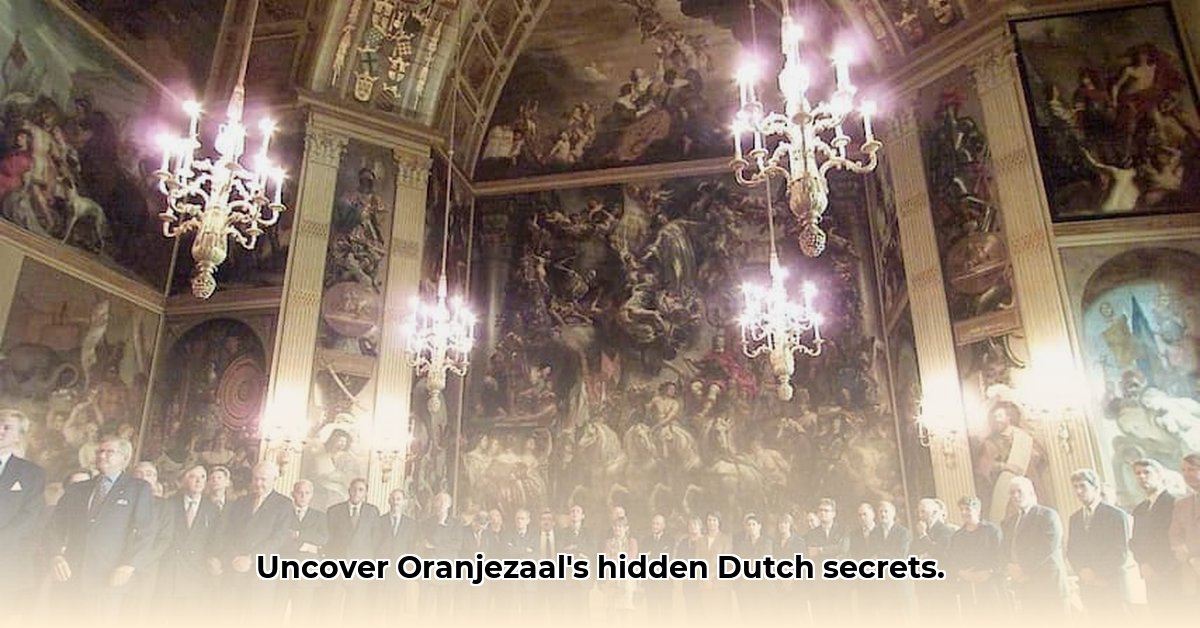
Oranjezaal: A Glimpse into Dutch Royal Grandeur
The Oranjezaal, nestled within Huis ten Bosch Palace in The Hague, isn't just a room; it's a time capsule, a breathtaking testament to the Dutch Golden Age. Imagine stepping back to the 17th century, surrounded by the opulence and artistry that defined a nation's rise to global prominence. This magnificent hall, conceived after the passing of Prince Frederik Hendrik, showcases the pinnacle of Dutch craftsmanship and royal patronage. Designed by the architect Jacob van Campen, it transformed a simple space into a spectacular display of power and prestige – a visual feast that's both historically significant and aesthetically stunning. But what stories lie hidden within its gilded walls?
More Than Mere Decoration: A Reflection of Power and Patronage
The Oranjezaal's beauty is more than skin deep; it’s a tangible representation of the Netherlands’ cultural and political landscape of the 17th century. Think of it as a meticulously painted diary, chronicling ambitions, wealth, and the artistic flourishing of a golden era. It wasn’t simply a place of beauty; it was a stage for pivotal events, including the momentous First World Peace Conference of 1899. Isn't it remarkable to consider that such a landmark event in international relations unfolded within these very walls? The hall itself whispers of the power and influence wielded by the Dutch at the height of their Golden Age. The sheer scale of the project – the number of artists commissioned, the sheer volume of materials used – speaks to the resources at the disposal of the Dutch monarchy and the nation’s self-image on the global stage.
Amalia van Solms: A Patron's Unsung Influence
A captivating mystery shrouds the Oranjezaal's creation: Amalia van Solms’ precise role in shaping its artistic vision. While her patronage is undeniable, the extent of her personal involvement in the artistic decisions remains a subject of ongoing historical investigation. Did she influence the selection of artists? Suggest themes? Provide detailed feedback on the progress of the works? Historians continue to delve deep into archives, studying the artwork itself and the available documentation for clues to answer these questions. What we can say for certain is that her patronage ensured that the Oranjezaal became a powerful symbol of her lineage, her time, and the exceptional artistry surrounding her. This very ambiguity only serves to heighten the allure of this magnificent space – a space where the lines between patron and artist, vision and execution, remain subtly blurred.
Preserving History: Balancing Access and Conservation
The Oranjezaal presents a critical challenge: how do we safeguard this priceless historical treasure while simultaneously sharing its splendour with the world? Currently, access to the Oranjezaal is restricted, a necessary measure to protect its delicate beauty and historical integrity. However, innovative technologies are bridging this gap. High-resolution virtual tours, such as the one available via Google Street View, offer an immersive experience, bringing the grandeur of the Oranjezaal to a global audience while minimising the risk of damage to the original space. We can look forward to future developments that might allow carefully managed public access – perhaps guided tours or specialized exhibitions – while continuing to ensure the long-term preservation of this important monument.
A Collaborative Effort for the Future
The continued survival of the Oranjezaal relies on a collaborative effort. It's not just the responsibility of the Royal House; it requires the collective commitment of various stakeholders. Key players include the Royal House of Orange, institutions like the Rijksmuseum, tourism boards, and the Dutch government. Each stakeholder plays a unique role: some provide historical expertise, others the financial resources, and still others focus on broader public engagement. This collaboration ensures the hall's ongoing preservation and research, as well as the accessibility of this landmark to a wider audience.
Key Takeaways:
- The Oranjezaal at Huis ten Bosch Palace is a magnificent example of Dutch Golden Age architecture and art.
- Virtual tours, such as those offered via Google Street View, provide remarkable access to this otherwise restricted space.
- The Oranjezaal's enduring legacy requires a collaborative effort between the Royal House, museums, tourism boards, and the Dutch government for its continued upkeep.
Virtually Exploring the Inaccessible Oranjezaal
A Step-by-Step Guide:
- Locate: Begin your journey by searching for "Huis ten Bosch Palace" on Google Maps.
- Activate Street View: Look for the small yellow figure icon, indicating the availability of Street View imagery.
- Navigate: Click on the yellow figure and explore the virtual environment. Find the entrance to the Oranjezaal and step inside.
- Immerse Yourself: Use the directional arrows to move around, zoom in to admire the details, and let yourself be transported back in time.
- Further Research: Complete your journey by delving deeper into the history of the Oranjezaal and the artists whose works adorn its walls.
https://museumjocas.nl/beroemde-oranjezaal-te-bekijken-via-google-street-view/